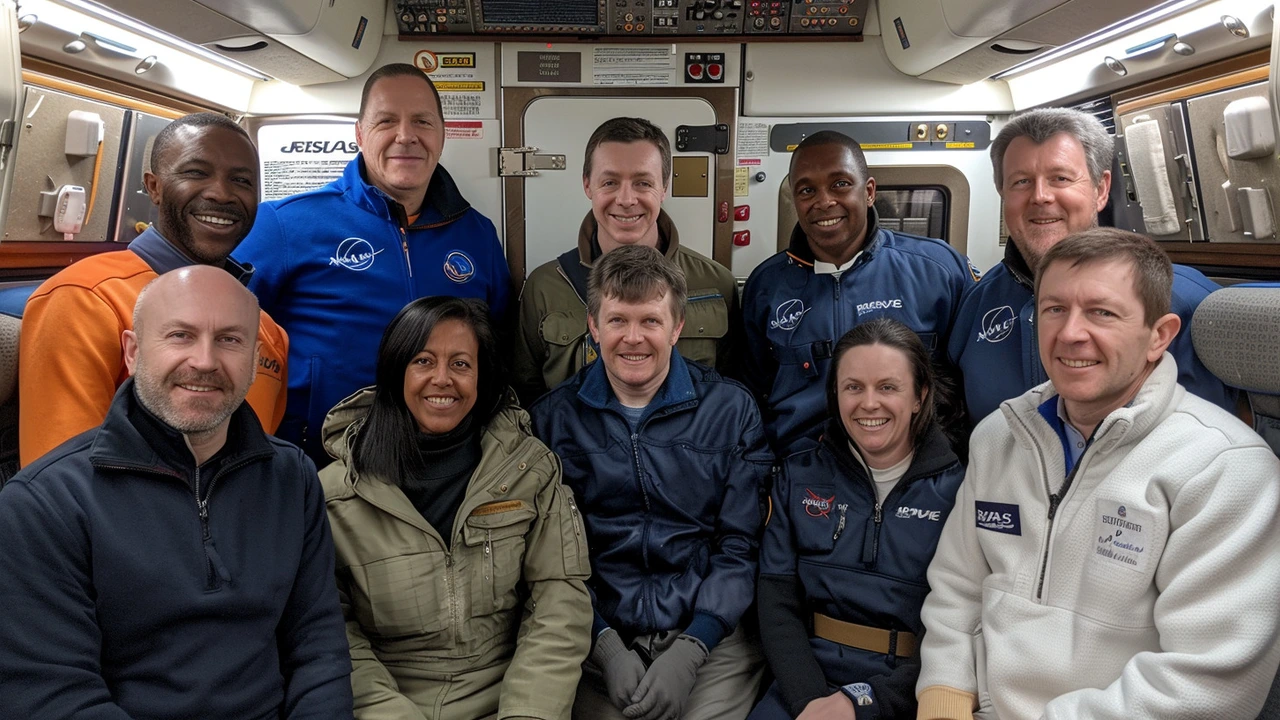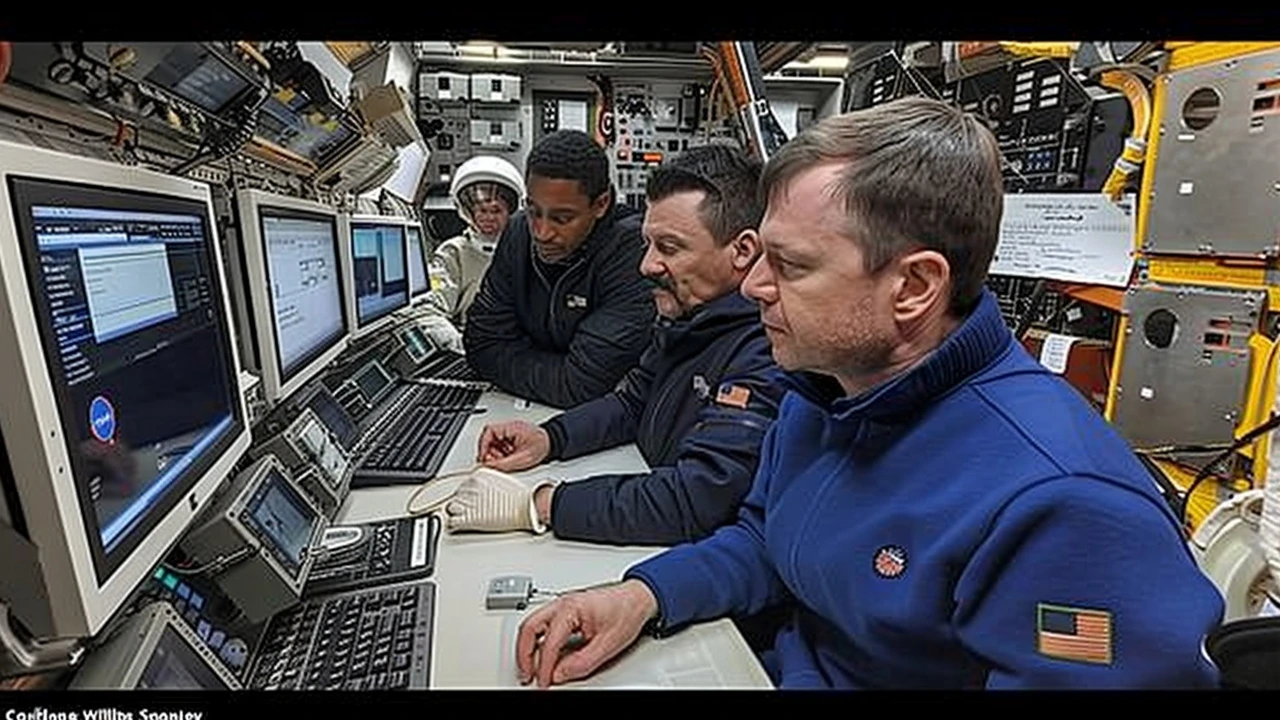Boeing Strives to Safely Bring Astronauts Sunita Williams and Barry Wilmore Back to Earth amidst Starliner Challenges
25 Jun, 2024Challenges in Returning the Starliner to Earth
Boeing's Starliner capsule, presently docked at the International Space Station (ISS), is grappling with multiple technical challenges that have delayed its return journey to Earth. Initially launched on June 5, the return schedule has faced continual rescheduling due to significant issues, including five helium leaks, five malfunctioning maneuvering thrusters, and a propellant valve failure. These complications have pushed back the return date three times, with no definitive new date yet established.
The capsule's situation underscores broader concerns related to its expendable propulsion system, crucial for separating from the ISS and positioning for re-entry into Earth's atmosphere. While NASA has stated the Starliner can remain docked at the ISS for up to 45 days, it could potentially extend to 72 days using backup systems if needed. This extended docking capability is essential, given Starliner's critical role in carrying astronauts Sunita Williams and Barry Wilmore back to Earth safely.
Importance of the Current Mission
The extended mission has become increasingly important for Boeing's space division. Successful resolution of the Starliner’s issues is crucial for Boeing to secure certification from NASA as the agency's second ride to the ISS, alongside SpaceX's Crew Dragon. It's a significant milestone that will determine Boeing's future in manned space flights and its role in NASA's broader space exploration agenda.
Both NASA and Boeing officials are meticulously working on rectifying the technical problems through software updates and adjustments in hardware usage. This collaborative effort is geared towards assuring the safety and reliability of the Starliner capsule, reflecting on how critical the mission is for both organizations.

Technical Issues and Solutions
The primary concerns with the Starliner center around its propulsion and maneuvering systems. The helium leaks and thruster malfunctions have raised alarms, necessitating ground-breaking changes in technological approach and execution protocols. The propellant valve failure, in particular, mandates rigorous scrutiny and reengineering to guarantee the safety of current and future missions.
Software updates play a vital role in resolving these problems. By optimizing the control algorithms and enhancing real-time monitoring ability, the likelihood of such issues in future missions can be significantly reduced. Hardware usage adjustments, encompassing redesigning certain components to withstand the rigors of space travel better, are also integral to this problem-solving approach.
Steps for the Return Journey
When the Starliner capsule is finally ready for its journey back to Earth, the return plan involves a meticulous and multi-step process. Initially, the thrusters would be fired to undock the capsule from the ISS. Following a successful undocking, the capsule will engage on a predicted six-hour journey back to Earth's surface. The capsule's descent will be assisted by parachutes and airbags, ensuring a controlled and safe landing. Potential landing sites have been identified in the southwestern United States, strategically chosen for their suitability and safety parameters.
NASA's confidence in the Starliner's ability to return the astronauts safely, despite the current technical setbacks, offers a reassurance amid prevailing uncertainties. The mission, albeit extended beyond its original eight-day duration, emphasizes the critical nature of ensuring every safety measure and technical aspect is thoroughly addressed before commencing the return journey.

Future Implications for Boeing's Space Division
The resolution of these technical challenges and a successful return mission would significantly bolster Boeing's standing in the competitive space travel industry. Positioned as a potentially reliable alternative to SpaceX's Crew Dragon, the Starliner's successful deployment and return would mark a pivotal achievement in Boeing's long-term space exploration strategy. It highlights the important intersection of innovation, safety, and engineering excellence required to propel human spaceflight into the future.
The collaborative efforts between NASA and Boeing are not just about resolving immediate issues. They represent a forward-looking partnership aimed at setting new benchmarks in space travel safety and reliability. As these endeavors unfold, they pave the way for more ambitious missions and broader goals in human space exploration, showcasing a resilient and adaptable approach to overcoming aerospace engineering challenges.
Conclusion
The ongoing mission of Boeing's Starliner capsule underscores a phase filled with both challenges and opportunities. Addressing technical issues while ensuring the safe return of astronauts Sunita Williams and Barry Wilmore is paramount. The extended mission duration, coupled with rigorous problem-solving efforts, highlights the meticulous nature of space travel. As the aerospace community closely watches these developments, the ultimate success of the Starliner mission could mark a significant milestone in Boeing's space exploration narrative, giving it a fortified position alongside SpaceX within NASA’s broader mission objectives.

 by
by